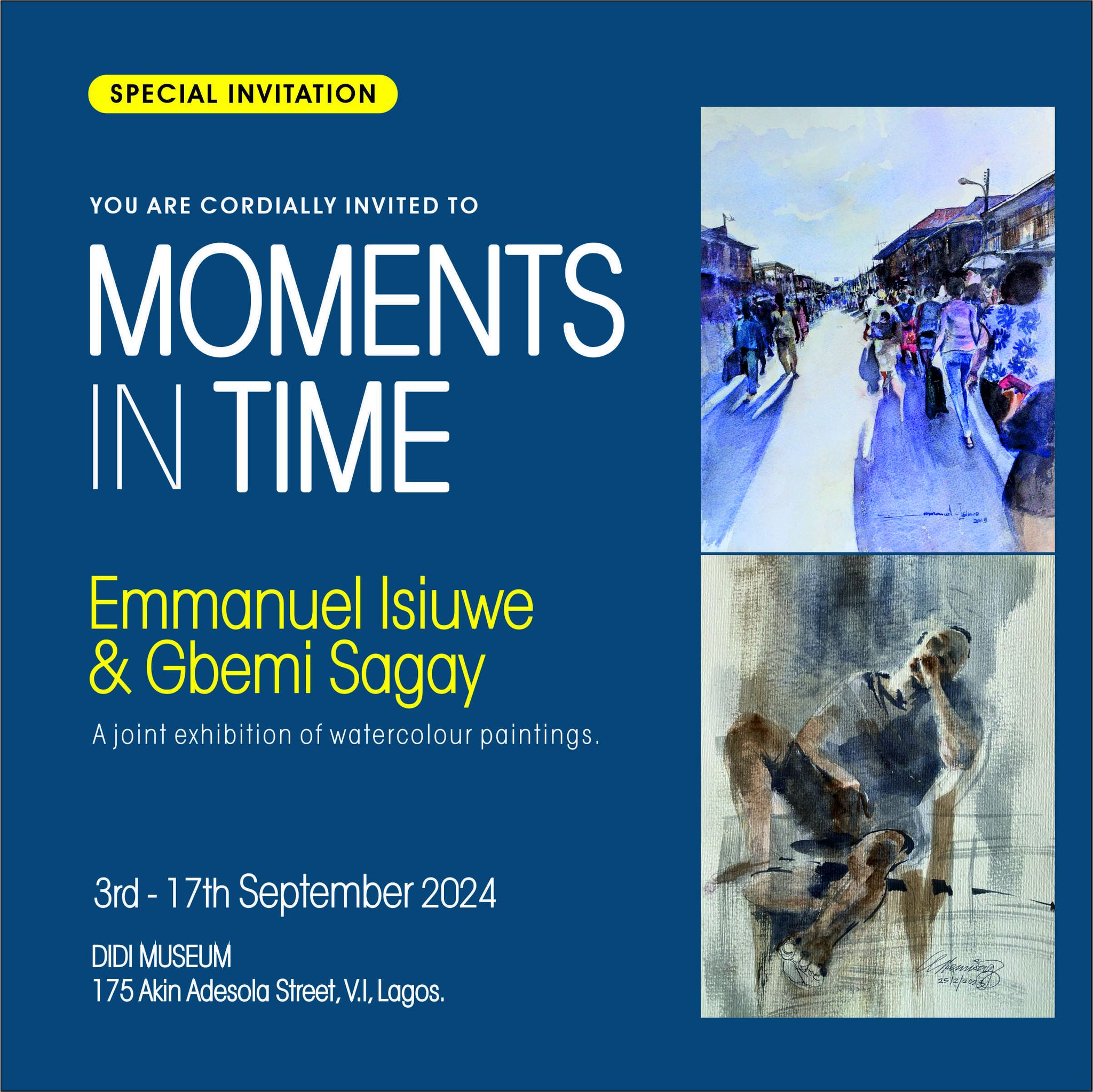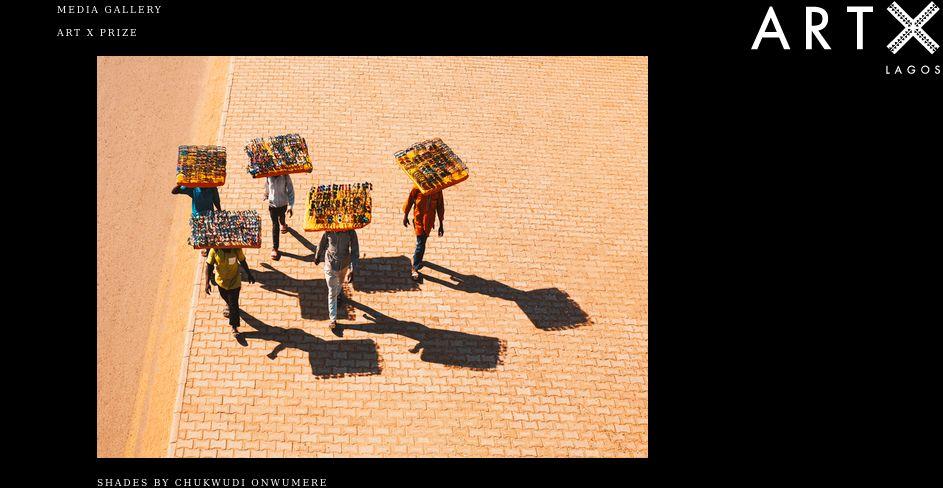Home > Art News
Four years after Nigeria hosted select managers of museums from Europe, in Benin, Edo State, the results of the event and subsequent meetings, is currently being celebrated in Lagos.
The 2013 historic event organised by the National Commission for Museums and Monuments (NCMM), led by its current Director-General, Mallam Yusuf Abdallah Usman, hosted a conference that produced what the convergence described as ŌĆśBenin Plan of ActionŌĆÖ. Among participants were Dr. Michael Barrett and Dr. Lotten Gustafsson-Reinius, representatives of the National Museum of Ethnography of the Museums of World Culture Stockholm, Sweden Dipl. Ethn; Silvia Dolz of Museum f├╝r V├Člkerkunde Dresden, Staatliche Ethnographische Sammlungen Sachsen of the Staatliche Kunstsammlungen Dresden, Germany; and Dr. Annette Schmidt of the National Museum of Ethnology of the Netherlands as well as representatives of Benin monarch. Between then and now, several other efforts have been made, which directly and indirectly have led to the return of some artefacts to Nigeria. While institutions voluntarily returned some of the objects, interceptions by foreign security units have led to the recovery of others.
Last week, at National Museum, Onikan, Lagos, it was celebration for Nigeria as the works said to have been repartriated were on display as exhibition titled Return of the Lost Treasures. Shortly before the exhibition was unveiled by the Minster of Information and Culture, Alhaji Lai Mohammed, Usman told guests that artefacts on display were that of Nigerian origins returned from countries such as France, Switzerland and U.S, among other foreign spots.
While keen followers of politics of cultural objects ownership and repatriation would expect to see NigeriaŌĆÖs iconic artefacts in foreign museums to be included among the repatriated pieces, the ongoing exhibition is, perhaps the more reason to step up efforts. Among the iconic cultural objects of Nigerian origin are the Idia ivory mask (circa 1700), in British Museum, London; and Nok terracotta (900-2000 years), on display at The Louvre Museum, Paris, France. These iconic artefacts and similar ones, according to provenance were stolen long before the original spots of theft became parts of Nigeria.Beyond the celebration, it is important to know the provenance of the returned artefacts, particularly the periods of production through laser carbondating.
However, in modern period, it has been established that illegal movements of cultural objects across international borders increasingly create challenge for museum managers in many countries. But during the exhibition of the repatriated artefacts, government hinted that Nigeria may establish a special police unit to stop Illegal movement of artefacts outside the country. Mohammed noted that countries that have successfully defeated illicit trafficking of cultural objects implored the services of specific security unit.
Shortly before his speech, a UNESCO expert on cultural objects law, Prof Folarin Shyllon has advised government to emulate other developed countries that have special police units.
ŌĆ£I am going to meet the Inspector-General of Police to ensure we look into Prof ShyllonŌĆÖs recommendation of a special force unit,ŌĆØ Mohammed told audience at National Museum.
Mohammed blamed the two major religions in Nigeria on misconception of what culture stands for. ŌĆ£Unfortunately, promoters of Christianity and Islam demarket culture, and this must change if we have to place value on our heritage,ŌĆØ adding that the fastest growing economy in the world is culture, driven by the creative industry.
Recalling the journey of government in recovery of the artefacts, Usman said efforts at repatriating them over the years were difficult. However, few years ago, ŌĆ£a Repatriation unit in the office of the Director-General was created to serve as implementation vehicle of the new strategy,ŌĆØ Usman explained.
The current minister, Mohammed and past D-Gs of NCMM, Usman said, should be commended for contributing to what he described as ŌĆ£celebration of the repatriated arfefacts to Nigeria.ŌĆØ Usman also thanked NigeriaŌĆÖs foreign misssion in US and the global body , UNESCO.
During opening of the exhibition, a brief discussion had Shyllon explained the complexity and progress made at the global front. He noted that the issue of illicit artefacts dates back to the old era when Romans were carting away artefacts as part of spoils of war. That freedom of the dark days, he said, then led the whole world coming together in 1815, when France was compelled to return cultural heritage objects taken away from other countries. Also after the WW-2, it was discovered that Hitler carted away cultural objects of other countries to Germany. ŌĆ£UNESCO stepped in and several conventions,ŌĆØ Shyllon said, started coming up. Nigeria being a member of the conventions, he advised, can take advantage of them. ŌĆ£But more importantly, each country must have local policing,ŌĆØ he said, and recalled: ŌĆ£I have advocated that Nigeria should have special police unit to prevent illicit exports.ŌĆØ He also cautioned that ŌĆ£We must have adequate inventory as well as domesticate the IntŌĆÖl conventions.ŌĆØ
Jean Borgatti, Art Historian at University of Benin spoke on the challenges of imparting traditional art history knowledge and value on the youths in Nigeria. ŌĆ£Most of the students are interested in modern art history, which makes it difficult to spread the history of traditional art.ŌĆØAudio Visual Arrache, French Embassy in Nigeria, Pierre Cherruau boasted that ŌĆ£it has always been a priority for French to return artefacts as we have done several conferences on it.ŌĆØ
Source: guardian.ng
IN LAGOS, LOST TREASURES BRINGS HOPE IN ARTEFACTS REPATRIATION
Four years after Nigeria hosted select managers of museums from Europe, in Benin, Edo State, the results of the event and subsequent meetings, is currently being celebrated in Lagos.
The 2013 historic event organised by the National Commission for Museums and Monuments (NCMM), led by its current Director-General, Mallam Yusuf Abdallah Usman, hosted a conference that produced what the convergence described as ŌĆśBenin Plan of ActionŌĆÖ. Among participants were Dr. Michael Barrett and Dr. Lotten Gustafsson-Reinius, representatives of the National Museum of Ethnography of the Museums of World Culture Stockholm, Sweden Dipl. Ethn; Silvia Dolz of Museum f├╝r V├Člkerkunde Dresden, Staatliche Ethnographische Sammlungen Sachsen of the Staatliche Kunstsammlungen Dresden, Germany; and Dr. Annette Schmidt of the National Museum of Ethnology of the Netherlands as well as representatives of Benin monarch. Between then and now, several other efforts have been made, which directly and indirectly have led to the return of some artefacts to Nigeria. While institutions voluntarily returned some of the objects, interceptions by foreign security units have led to the recovery of others.
Last week, at National Museum, Onikan, Lagos, it was celebration for Nigeria as the works said to have been repartriated were on display as exhibition titled Return of the Lost Treasures. Shortly before the exhibition was unveiled by the Minster of Information and Culture, Alhaji Lai Mohammed, Usman told guests that artefacts on display were that of Nigerian origins returned from countries such as France, Switzerland and U.S, among other foreign spots.
While keen followers of politics of cultural objects ownership and repatriation would expect to see NigeriaŌĆÖs iconic artefacts in foreign museums to be included among the repatriated pieces, the ongoing exhibition is, perhaps the more reason to step up efforts. Among the iconic cultural objects of Nigerian origin are the Idia ivory mask (circa 1700), in British Museum, London; and Nok terracotta (900-2000 years), on display at The Louvre Museum, Paris, France. These iconic artefacts and similar ones, according to provenance were stolen long before the original spots of theft became parts of Nigeria.Beyond the celebration, it is important to know the provenance of the returned artefacts, particularly the periods of production through laser carbondating.
However, in modern period, it has been established that illegal movements of cultural objects across international borders increasingly create challenge for museum managers in many countries. But during the exhibition of the repatriated artefacts, government hinted that Nigeria may establish a special police unit to stop Illegal movement of artefacts outside the country. Mohammed noted that countries that have successfully defeated illicit trafficking of cultural objects implored the services of specific security unit.
Shortly before his speech, a UNESCO expert on cultural objects law, Prof Folarin Shyllon has advised government to emulate other developed countries that have special police units.
ŌĆ£I am going to meet the Inspector-General of Police to ensure we look into Prof ShyllonŌĆÖs recommendation of a special force unit,ŌĆØ Mohammed told audience at National Museum.
Mohammed blamed the two major religions in Nigeria on misconception of what culture stands for. ŌĆ£Unfortunately, promoters of Christianity and Islam demarket culture, and this must change if we have to place value on our heritage,ŌĆØ adding that the fastest growing economy in the world is culture, driven by the creative industry.
Recalling the journey of government in recovery of the artefacts, Usman said efforts at repatriating them over the years were difficult. However, few years ago, ŌĆ£a Repatriation unit in the office of the Director-General was created to serve as implementation vehicle of the new strategy,ŌĆØ Usman explained.
The current minister, Mohammed and past D-Gs of NCMM, Usman said, should be commended for contributing to what he described as ŌĆ£celebration of the repatriated arfefacts to Nigeria.ŌĆØ Usman also thanked NigeriaŌĆÖs foreign misssion in US and the global body , UNESCO.
During opening of the exhibition, a brief discussion had Shyllon explained the complexity and progress made at the global front. He noted that the issue of illicit artefacts dates back to the old era when Romans were carting away artefacts as part of spoils of war. That freedom of the dark days, he said, then led the whole world coming together in 1815, when France was compelled to return cultural heritage objects taken away from other countries. Also after the WW-2, it was discovered that Hitler carted away cultural objects of other countries to Germany. ŌĆ£UNESCO stepped in and several conventions,ŌĆØ Shyllon said, started coming up. Nigeria being a member of the conventions, he advised, can take advantage of them. ŌĆ£But more importantly, each country must have local policing,ŌĆØ he said, and recalled: ŌĆ£I have advocated that Nigeria should have special police unit to prevent illicit exports.ŌĆØ He also cautioned that ŌĆ£We must have adequate inventory as well as domesticate the IntŌĆÖl conventions.ŌĆØ
Jean Borgatti, Art Historian at University of Benin spoke on the challenges of imparting traditional art history knowledge and value on the youths in Nigeria. ŌĆ£Most of the students are interested in modern art history, which makes it difficult to spread the history of traditional art.ŌĆØAudio Visual Arrache, French Embassy in Nigeria, Pierre Cherruau boasted that ŌĆ£it has always been a priority for French to return artefacts as we have done several conferences on it.ŌĆØ
Source: guardian.ng
Art News
Moments in Time: A joint exhibition of watercolour paintings
Click to read...
Kunle Adeyemi Creative Art without Borders

Click to read...
Oghagbon Argungu series exhibition 10, 2024: Fieldnotes from a master

Click to read...
Metalphysics: Muraina Akeem's loud celebration

Click to read...
ART X Prize 2021 finalists announced

Click to read...
Art educators meet, counsel on best way to reposition visual arts in schools and the society

Click to read...
James Baldwin on the ArtistÆs Struggle for Integrity and How It Illuminates the Universal Experience of What It Means to Be Human

Click to read...
Fact File...Curatorial note by Ovie Omatsola

Click to read...
Page 1 of 12 [Next] [Last Page]